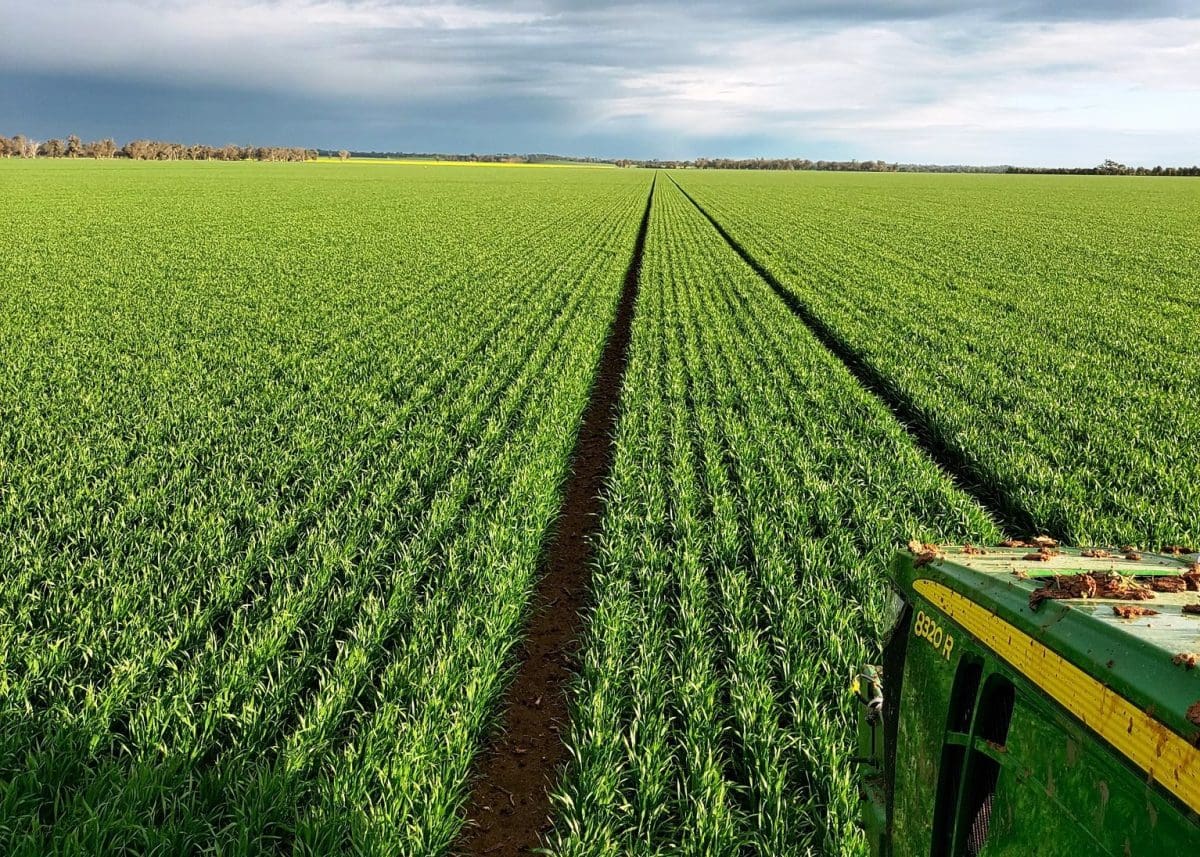
Growers are boosting yield potential for cereal crops like this crop of Scepter wheat with urea. Photo: Broden Holland, Young
WHEAT and barley markets softened this week as growers advanced their forward sales following recent rain which has underpinned yield prospects in most of Australia’s cropping districts.
Sorghum values bucked the trend by firming by a few dollars as container packers and domestic consumers competed for the limited tonnage available.
 On the Darling Downs, the inverse between current and new-crop barley has shrunk to $55 per tonne, with the nearby barley market dropping by up to $25/t, compared with only $10/t in the new-crop slot.
On the Darling Downs, the inverse between current and new-crop barley has shrunk to $55 per tonne, with the nearby barley market dropping by up to $25/t, compared with only $10/t in the new-crop slot.
This reflects the impact on the market of the last drought transshipment grain now being priced out of the Brisbane free-on-truck market ahead, which traded last week at $295/t.
In southern port zones, export demand for containerised and bulk new-crop wheat and barley appears to be underpinning values in the face of a big Victorian and a huge New South Wales crop which will filter into southern markets in November.
| This week | Last week | Change | |
| Barley Downs Sep | $315 | $338 | Down |
| Barley Downs Jan | $250 | $260 | Down |
| Barley Melbourne Sep | $245 | $255 | Down |
| Barley Melbourne Jan | $230 | $235 | Down |
| Wheat Downs Sep | $390 | $400 | Down |
| Wheat Downs Jan | $280 | $290 | Down |
| Wheat Melbourne Sep | $325-$330 | $335 | Down |
| Wheat Melbourne Jan | $275 | $285 | Down |
| Sorghum Downs Sep | $315 | $312 | Up |
| Sorghum Downs Mar-Apr | $270 | $268 | Up |
Table 1: Indicative delivered grain prices in AUD per tonne.
Early grain in demand
Despite signs of further reductions in cattle-on-feed numbers, Downs consumers are very much in the market for Queensland’s early barley.
This will replace interstate grain they have been forced to use since drought gripped the northern feedgrain market in late 2017, and will tide them over until the massive NSW harvest hits its straps in November.
Weather permitting, the south-west Queensland wheat harvest will get going in earnest around mid-October, but supply-side pressure is not expected to kill the inverse before November.
“We might see a bit of barley come off in the second half of September, but it will be mid October before we start to see much wheat,” one trader said.
“Early barley will still get a substantial premium over new-crop.”
Pricing into export
Booking of new-crop wheat and barley export slots for boxed and bulk grain is reported to be advancing.
“Australian grain is buying business out of South Australia and Victoria,” Carpendale Commodities trader Chris Coore said.
He said rain on Friday and Saturday had bolstered yield prospects for crops in Queensland and around the NSW border, and encouraged some grower selling.
“At around $250/t ex farm, we saw some grower selling on Monday and Tuesday after that rain, and now the market has come down to where growers aren’t so interested in selling.”
Trade sources report growers continue to forward sell on multigrade contracts which lock in a base a value for H2 or SFW wheat.
“We all know big crops get thirsty, so after the past three seasons being so hard, growers are still quite jumpy about quality.”
Yield chase continues
Urea is still being fed to crops with good yield potential in all states as growers attempt to make up for softening grain prices with increased production.
Preston Grain principal Bill Preston at Temora in NSW said plains country generally had 20-35mm of rain, and some paddocks around West Wyalong particularly were excessively wet.
“There are people around here flying on urea because they won’t get it on any other way,” he said.
Mr Preston said bids at depots on the south-west slopes had eased to around $180/t for new-crop barley, and grower interest in booking any tonnage had largely dried up once the price slipped below $200/t.
Bids for new-crop wheat delivered consumer are sitting at around $235/t.
“Grain prices are back $20-$30/t in the past month, and feedlotters and the other consumers are sitting on the fence.
“I can’t blame them.”
Melaluka Trading director Simon Pritchard said Victorian crops went “sideways to backwards” in June and July when it was dry, but the recent 20-30mm most districts received over the weekend had preserved yield prospects.
The rain has failed to spark a round of new-crop selling from Victorian growers, who are hopeful of higher prices, while consumers are hoping the market will soften on harvest pressure.
“That inverse in Victoria will disappear in mid-November, which is when we might start to see grain come down from NSW.”
In nearby positions, Mr Pritchard said any growers with stored barley were generally selling direct to stockfeed mills dotted throughout the state.
“The trade’s not getting involved with that.”
